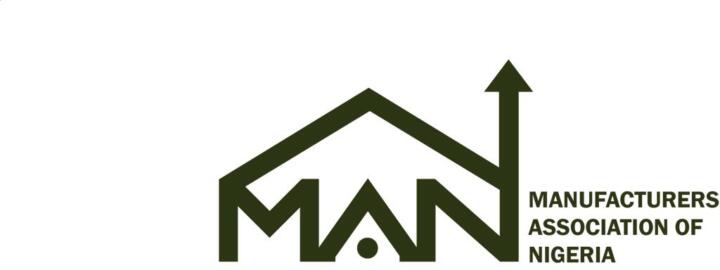Nigeria’s manufacturing sector has continued to face mounting challenges as credit to manufacturers dropped sharply by N7.72 trillion between January and September 2025, resulting in fragile growth across key industrial segments. Despite government efforts to stimulate local production and ease credit conditions, rising interest rates, exchange rate volatility, and persistent inflation have combined to strain the financial health of manufacturers nationwide.
According to data obtained from the Central Bank of Nigeria (CBN) and insights from the Manufacturers Association of Nigeria (MAN), credit to the manufacturing sector fell from N14.62 trillion in December 2024 to N6.9 trillion by the third quarter of 2025. This steep decline represents a 52.8% contraction, the sharpest in nearly a decade, reflecting the broader liquidity constraints and tightening monetary policies implemented to stabilize the naira and curb inflation.

The drop in credit has translated into sluggish industrial output and rising operational costs, forcing many manufacturers to scale down production or suspend expansion plans. MAN, in its recent quarterly economic review, noted that most firms are struggling to access affordable loans due to the high benchmark interest rate of 26.75% and stricter lending conditions imposed by commercial banks.
The report added that several small and medium-scale manufacturers are at risk of shutting down, particularly those dependent on imported raw materials and machinery. “The credit squeeze, coupled with foreign exchange scarcity and rising input costs, has weakened the productive capacity of Nigerian manufacturers. Many are unable to replenish inventories or finance working capital requirements,” the MAN statement read.
President of MAN, Otunba Francis Meshioye, lamented that the sector’s growth trajectory remains fragile despite the government’s industrialization agenda. He said, “The manufacturing sector continues to operate under intense pressure. Access to finance remains one of the biggest constraints. With credit facilities drying up and the cost of borrowing rising, firms are finding it increasingly difficult to sustain operations or invest in innovation.”
Meshioye urged policymakers to intervene urgently by introducing targeted credit facilities for manufacturers, reducing interest rates for productive sectors, and improving access to foreign exchange for the importation of critical inputs. “Without deliberate policy support, the sector’s contribution to GDP may decline further, and we risk losing more jobs in a period when unemployment is already high,” he warned.
Data from the National Bureau of Statistics (NBS) show that the manufacturing sector contributed 8.9% to Nigeria’s Gross Domestic Product (GDP) in the third quarter of 2025, down from 9.3% in the same period last year. Growth within the sector slowed to 1.3%, compared to 2.9% recorded in the previous quarter, reflecting weak industrial activity and declining consumer demand.
Industry experts attribute the slowdown to rising energy costs, multiple taxation, logistics challenges, and currency instability. The removal of fuel subsidies and continued depreciation of the naira have significantly increased production expenses, eroding profit margins and competitiveness in both domestic and export markets.
Dr. Muda Yusuf, Chief Executive Officer of the Centre for the Promotion of Private Enterprise (CPPE), described the credit decline as “a direct consequence of monetary tightening and exchange rate uncertainty.” He noted that while the Central Bank’s policies are aimed at controlling inflation, they have inadvertently constrained private sector growth. “The high-interest-rate environment discourages investment and limits manufacturers’ ability to expand. The CBN must strike a balance between stabilizing prices and supporting growth,” Yusuf said.
Similarly, an economist with CardinalStone Partners, Mrs. Temitope Adebayo, explained that many banks now prefer to invest in risk-free government securities rather than lend to manufacturers, whom they perceive as high-risk borrowers. “The spread between lending rates and returns on government instruments has widened, making it more profitable for banks to channel funds into treasury bills and bonds. This leaves the productive sector starved of the funds needed to drive growth,” she said.
Meanwhile, manufacturers continue to call for broader reforms to address structural bottlenecks in the economy. They argue that beyond credit availability, the country needs stable power supply, improved transport infrastructure, and predictable fiscal policies to revive the sector’s productivity. MAN’s survey revealed that over 60% of manufacturing firms spent more on diesel and alternative energy sources in 2025 than in any previous year.
Some stakeholders have also advocated for the establishment of a dedicated Manufacturing Development Bank that would provide long-term, low-interest financing for industrial projects. They believe such an institution, modeled after successful examples in Asia, could help reduce dependence on commercial bank lending and promote industrial expansion.
In response, the Federal Ministry of Industry, Trade, and Investment reiterated its commitment to supporting manufacturers through ongoing reforms under the Nigeria Industrial Revitalization Plan. The ministry said it is working with the Bank of Industry (BoI) and CBN to develop special intervention funds and loan guarantees for manufacturers, especially small and medium enterprises.
Despite these efforts, analysts warn that the sector’s short-term outlook remains weak unless macroeconomic stability improves. Persistent exchange rate volatility, high inflation, and infrastructure deficits continue to erode competitiveness and deter foreign investment in manufacturing.
As the year draws to a close, manufacturers are urging the government to create a more supportive business environment. “For the manufacturing sector to thrive, Nigeria must prioritize industrial financing, policy consistency, and infrastructural development,” Meshioye emphasized.
While the manufacturing sector remains a critical driver of employment and economic diversification, its fragile recovery underscores the urgent need for coordinated fiscal and monetary interventions. Without renewed access to credit and improved operating conditions, analysts fear that the country’s long-term industrialization goals could be at risk.
Support InfoStride News' Credible Journalism: Only credible journalism can guarantee a fair, accountable and transparent society, including democracy and government. It involves a lot of efforts and money. We need your support. Click here to Donate
